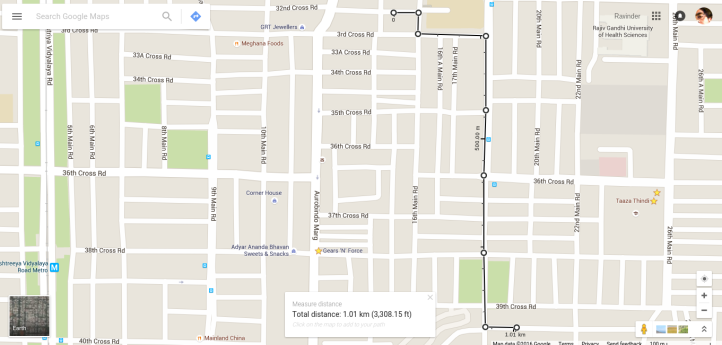Some of us are lucky. We get to spend a lot of time with our grandparents. 🙂
Perhaps, most of us in the 60’s/70’s generation have been pampered more by our grandparents than our parents. The “more” has not become “less”, but with parents stepping in to do a lot more pampering, the gap seems to have reduced.
I lost my maternal grandfather, when I was 2-3 years old. The only memories I have are through photos with him, and the stories I have heard from family.
Luckily, I got to spend some more time with my paternal grandfather. I remember spending time with him from the early 70’s till ’77 – the last time I got to spend time with him. We exchanged a few post cards in the late 70’s, but I did not get to see him before he passed away in Feb 1980.
Most of the time spent with him was while holidaying in Bangalore. He & my grandmother found it difficult to deal with the extremes of the Delhi weather, and spent very little time with us in our home in Delhi.
My standout memory of him involves a short walk that we took in Jayanagar, Bangalore. It was in our 1975 holidays. On a late afternoon in June, he decided to walk from 32nd Cross, 16th Main to 39th ‘F’ Cross, 18th Main. From one son’s home to another’s.
He gave me a lesson in defensive walking, if one can call it that. In a time when the traffic was far less, almost negligible, and the pavements were broader, though just solid mud, he told me about how one should always walk facing the traffic. Even on the pavement. Given the number of “Cross” roads in Jayanagar, this was a good input. In the days before indicators on vehicles, one had to keep their eyes on the vehicles approaching to see if they showed any indication of turning onto the road that you planned to cross!
The other thing that I remember about that short walk was him pointing out the large trees or open grounds as markers. “When you see this large tree, turn right”. “Take a left on the second road after the ground”. Even today, one can possibly find me, gaping at a large tree in awe, hopefully with my mouth closed…but then you need to be around to confirm that. 😉

The walk – From 32nd Cross, 16th Main to 39th ‘F’ Cross, 18th Main
Luckily the pavements are still wide. Many of the houses are still homes, but even this part of Jayanagar is getting commericalised now. When that happens, trees inside are felled, and motorbikes are parked on the pavement.
Some pics from July 2014 when I retraced this path on a cycle
Final word: Watch out for the combination of young and old taking a walk in your neighbourhood…who knows what memories are being created right there! 🙂










